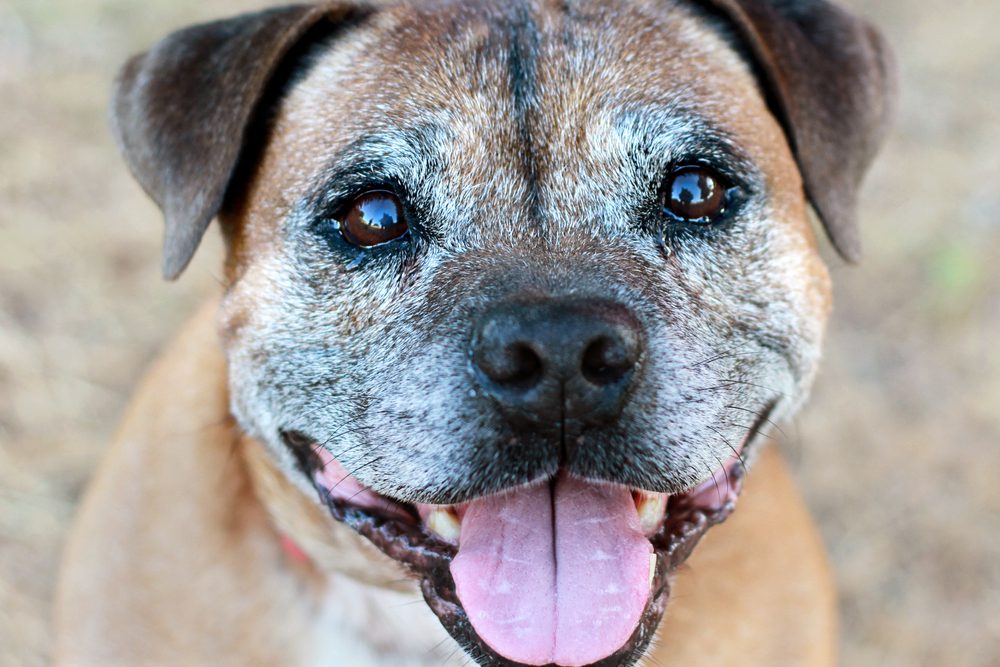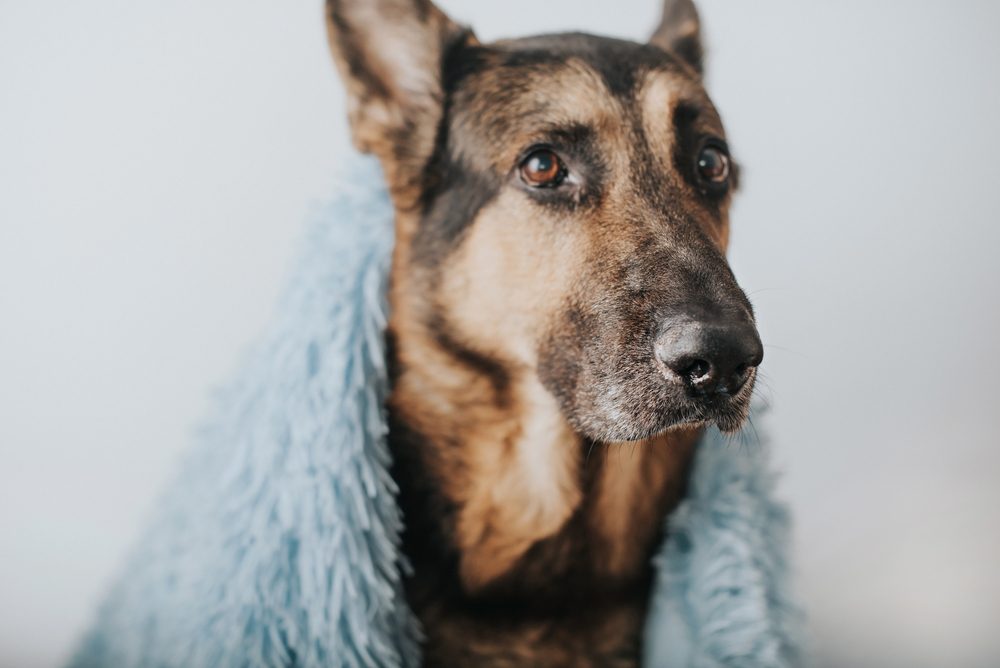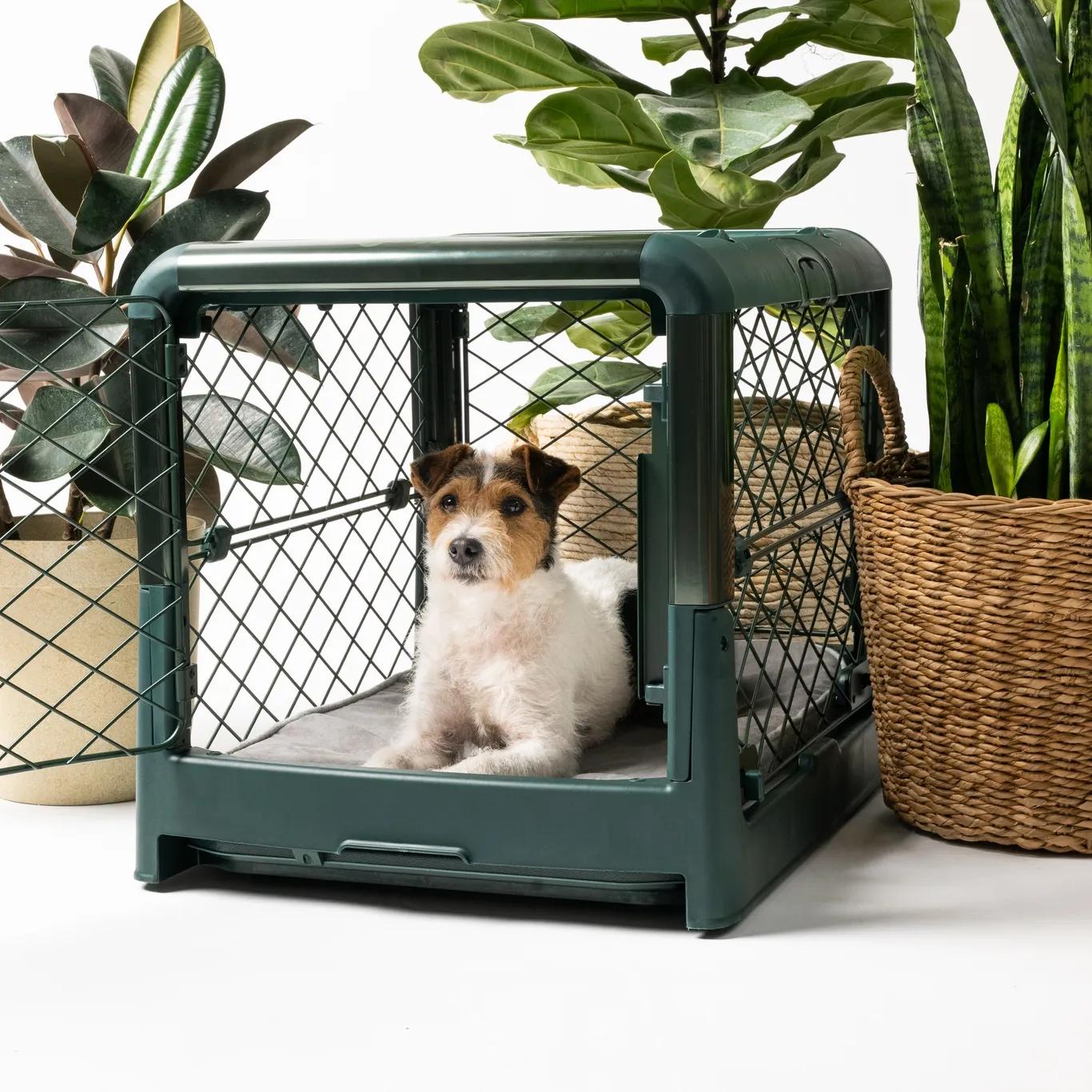How to Crate Train an Older Dog: Your Complete Guide

Table of Contents
The answer is: never. It’s never too late to crate train a dog! Adult dogs and even senior dogs can be crate trained. However, in these cases, the training process may take longer.
Crate training teaches your dog to enjoy spending time in an enclosed space – a dog crate or kennel. Crates are often used as training tools, but when adequately introduced, they represent a safe space for dogs.
Professional dog trainers recommend that all dogs receive crate training before being allowed free access to the house or apartment.
What are the Benefits of Crate Training an Older Dog?

Crates can be an excellent tool for training your dog and keeping it safe. If you’re thinking about crate training, here are some benefits.
- Safety: Crates keep dogs safe from harm when they’re left alone. They also provide a place where an untrained dog can go for safety when frightened or stressed by loud noises, visitors, or other dogs.
- Supporting Instincts: Dogs naturally seek out small, enclosed spaces to feel safe and secure. So by placing your dog in a crate, you’re creating a small, safe place to feel secure and comfortable.
- Training: When used correctly, crates help teach a dog to be comfortable alone in a confined space — which is vital for a well-behaved pet. The crate also provides a place to safely confine your dog when it’s not under direct supervision.
- Potty Training: Dogs usually don’t pee or poop where they slip. Therefore, crate time is an essential part of house training. However, you need to make sure to take the dog out for frequent potty breaks (even old dogs cannot hold it for a long amount of time).
- Easy Traveling: Dog crates are essential for traveling with your pup in the car. In fact, many airlines require pets to travel in crates when flying as checked baggage because it’s safer than allowing them to roam freely throughout the cabin during the flight.
How Long Does it Take to Crate Train an Older Dog?
It can take from two weeks to two months for your dog to get used to being crated. The time it takes will depend on several factors, including the dog’s breed and personality, as well as your effort and persistence.
With the right approach (positive reinforcement), success will come. However, you must adjust the dog training sessions to your dog’s needs and preferences.
For example, old dogs have shorter attention spans, so short sessions are important. Also, you need to know whether your dog is food-motivated or praise-motivated. In the first case, use dog treats and dog food as a reward and in the second, use cuddles to create a positive association with the crate.
What is the Best Way to Crate Train an Older Dog?
Crate training an older dog is slightly different than a puppy, but it can still be done! The thing is, older dogs have already formed habits. So, we need to work with that and make training easier for them.
Learn how to crate train your older dog with these step-by-step instructions.
Choose the Right Crate for Your Older Dog
The size of your dog’s crate should be proportional to its size. If you have a smaller dog, you’ll want to choose a smaller crate. If you have a larger dog, then go ahead and select a larger crate.
The key here is that when your dog is in the crate, he should have enough room to lay down comfortably, with enough space left to stretch out if he wants to.
In addition to choosing the correct crate size, you need to select the right crate material. Namely, plastic crates are easy to clean and recommended if your older dog is not well house trained.
Let Your Older Dog Explore the Crate
When your dog reaches adulthood, it’ll probably be curious about his new “den.” Let it explore the crate on its terms.
You can place its dog bed or soft blanket inside. That way, the dog crate will smell like something familiar and be comfortable. The dog’s food and water bowl can be placed inside or near the crate.
Add Toys and Treats in the Crate for Your Older Dog
Once your dog feels comfortable exploring its new home with you, start adding some treats and its favorite toys inside.
This will reduce your dog’s stress and help it feel more comfortable in the new crate. Chew toys and Kong toys are excellent as they can keep your dog busy for a lot of time.
Practice Closing the Crate Door With Your Dog
This step is pretty simple, but it’s an important one! You’ll want to practice closing the door with your dog in its crate and rewarding it for being calm and quiet while inside.
This will help it learn that being in the crate doesn’t mean that something bad is happening or that you will leave it alone for a long time. It just means it needs to be still while you finish your work.
Start Small with Short Periods in the Crate
You don’t want to try and transition your dog into being able to stay in the crate for more extended periods of time.
Start small – usually with 5 minutes, then gradually increase it by 5 minutes each day until they are comfortable spending 30-60 minutes in the crate at one time.
Increase Your Dog’s Time in the Crate
Once your dog is comfortable spending 30-60 minutes in the crate, it’s time to increase their time slowly.
Start by adding five more minutes each day until it is comfortable spending up to 2 hours in the crate.
Then slowly increase again by adding five more minutes each day until they can spend 4 hours or more in there at once!
Use Positive Reinforcement With Your Older Dog
If your older dog gets anxious when left alone, try using positive reinforcement to help it get comfortable with the crate. This can include toys or treats that are only given to it when in the crate.
You can also put some of its favorite treats or toys in there so that even if they don’t want to be in there at first, they will want to go back as soon as possible because of all the goodies inside.
Be Patient With Your Older Dog
It may take an older dog a bit longer to get used to the crate, especially if it has never been in one before.
Pet owners need to be patient and not punish their dogs for being stressed out over it. Going too fast is a recipe for a natural disaster – the dog will start hating the crate, and crate training will not be an option.
- Safe and effective solution to help your furry friend stay calm and relaxed.
- Contains organic, full-spectrum hemp with naturally occuring CBD can help your furry friend relax in as little as one hour.
- These melt-in-your-mouth bites contain only the best, non-GMO, all-natural ingredients, while having a delicious peanut butter flavor.
How do You Crate Train an Older Dog With Anxiety?
CBD can help make the crate training process easier! You can give your dog a dose of If your dog has separation anxiety or any other form of anxiety, you can give it CBD before you put it in the crate. This will help it calm down.
We recommend the Honest Paws Calm line of CBD products. These hemp-based pet CBD products are made with all-natural ingredients. They can help calm your dog down without causing sedation or drowsiness.Pet parents should remember that while useful, CBD or any other supplement is not the solution – it is just an aid. A healthy lifestyle and dog care (physical activity to burn excess energy & mental stimulation like teaching new tricks) combined with positive reinforcement are the best approaches toward successful crate training.




















